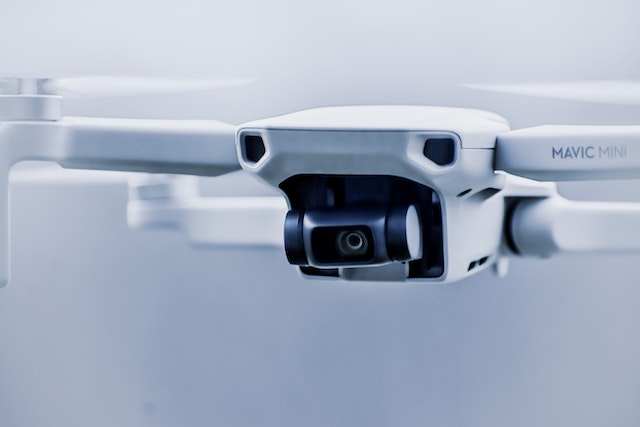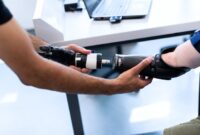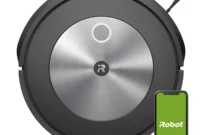Unmanned Aerial Vehicles (UAVs), commonly known as drones, have revolutionized various industries and become an integral part of modern technology. In this article, we will explore the world of UAVs, their applications, advantages, challenges, and the future they hold.

Introduction
UAVs, or Unmanned Aerial Vehicles, are aircraft that are operated without a human pilot on board. They can be remotely controlled or autonomously programmed to execute specific tasks. UAVs have gained significant popularity due to their versatility, accessibility, and the wide range of applications they offer.
Definition of UAVs
UAVs are aerial vehicles that operate without a human pilot on board. They are typically controlled either by a remote operator on the ground or by onboard computers using pre-programmed flight plans. These vehicles are equipped with various sensors, cameras, and other specialized equipment to carry out their intended functions.
History of UAVs
The history of UAVs can be traced back to the early 20th century when experiments were conducted with remotely piloted aircraft. However, it was not until the late 20th century that UAVs started gaining significant attention and advancements in technology allowed for their practical use.
Types of UAVs
There are several types of UAVs, each designed for specific purposes and applications. The main types include fixed-wing UAVs, rotary-wing UAVs, hybrid UAVs, and multirotor UAVs.
- Fixed-Wing UAVs: These UAVs resemble traditional airplanes and rely on fixed wings to generate lift and propulsion. They are well-suited for long-range operations and can stay in the air for extended periods.
- Rotary-Wing UAVs: Also known as rotorcraft UAVs or drones, these vehicles use rotating blades to achieve lift and maneuverability. They can hover in place and perform agile maneuvers, making them ideal for close-quarters operations.
- Hybrid UAVs: Hybrid UAVs combine features of both fixed-wing and rotary-wing UAVs. They offer the ability to take off and land vertically like a helicopter while also having the efficiency and range of a fixed-wing aircraft.
- Multirotor UAVs: Multirotor UAVs, commonly referred to as quadcopters or hexacopters, have multiple rotors arranged in a symmetric pattern. They are highly maneuverable and can hover in place, making them popular for aerial photography and recreational use.
Applications of UAVs
UAVs have found applications across various industries, and their versatility has led to the development of new use cases. Some of the prominent applications of UAVs are:
- Military and Defense: UAVs have revolutionized military operations by providing intelligence, surveillance, and reconnaissance capabilities. They can be used for target acquisition, monitoring enemy activities, and delivering payloads in combat zones, reducing the risk to human personnel.
- Aerial Photography and Videography: UAVs equipped with high-resolution cameras have transformed the field of aerial photography and videography. They enable photographers and filmmakers to capture stunning aerial shots and unique perspectives that were once only possible with expensive equipment or helicopters.
- Agricultural Monitoring: UAVs equipped with specialized sensors can monitor crop health, detect pests or diseases, and optimize irrigation and fertilization. This data allows farmers to make informed decisions, leading to increased crop yields and cost savings.
- Environmental Monitoring: UAVs play a crucial role in environmental research and monitoring. They can be used to survey and map areas affected by natural disasters, monitor wildlife populations, assess the health of ecosystems, and track changes in land use and deforestation.
- Search and Rescue Operations: In emergency situations, UAVs equipped with thermal cameras and searchlights can aid in search and rescue operations. They can cover large areas quickly, locate missing persons, and provide real-time situational awareness to rescue teams.
- Package Delivery: Companies like Amazon and UPS are exploring the use of UAVs for package delivery. UAVs can navigate through congested urban areas, delivering packages faster and more efficiently than traditional delivery methods.
- Infrastructure Inspection: UAVs are increasingly used for inspecting infrastructure such as bridges, power lines, and pipelines. They can capture high-resolution images and videos, allowing engineers to assess the condition of structures without the need for expensive scaffolding or manual inspections.
Advantages of UAVs
UAVs offer numerous advantages that contribute to their growing popularity and widespread adoption. Some key advantages include:
- Cost-Effective: UAVs are often more cost-effective than manned aircraft or ground-based methods for various tasks. They require fewer resources to operate, reducing expenses associated with personnel, fuel, and maintenance.
- Versatility and Accessibility: UAVs can access remote or hazardous areas that are difficult for humans to reach. They can fly at different altitudes, navigate through challenging terrains, and operate in harsh weather conditions, making them highly versatile.
- Safety: By eliminating the need for human pilots in risky situations, UAVs enhance safety and reduce the potential for human casualties. They can be used in dangerous environments, such as disaster zones or conflict areas, without putting human lives at risk.
- Efficiency and Time-Saving: UAVs can complete tasks faster and more efficiently than traditional methods. They can cover large areas quickly, collect data in real-time, and perform repetitive tasks with precision, saving time and resources.
- Data Collection and Analysis: UAVs equipped with advanced sensors and cameras enable the collection of vast amounts of data. This data can be used for analysis, leading to valuable insights and informed decision-making in various fields.
Challenges and Concerns
While UAVs offer immense potential, they also face certain challenges and concerns that need to be addressed:
- Regulation and Privacy: The increasing use of UAVs has raised concerns regarding privacy and airspace regulations. Striking a balance between enabling innovation and safeguarding privacy is a challenge for policymakers.
- Airspace Integration: Integrating UAVs into existing airspace systems is a complex task. Ensuring safe and efficient integration requires developing protocols, regulations, and technologies to manage the growing number of UAVs sharing airspace with manned aircraft.
- Safety Risks: Accidents involving UAVs can pose risks to people and property on the ground. Establishing safety standards, training operators, and implementing fail-safe mechanisms are crucial for mitigating these risks.
- Limited Battery Life and Range: Most UAVs have limited battery life, which restricts their operational endurance. Improving battery technology and extending the range of UAVs are areas of ongoing research and development.
- Weather Conditions: Adverse weather conditions such as strong winds, rain, or fog can affect the performance and safety of UAVs. Ensuring reliable operation in different weather conditions is a challenge that requires advanced navigation and sensing capabilities.
Future of UAVs
The future of UAVs holds immense possibilities and potential advancements. Some areas of development and innovation include:
- Autonomous Capabilities: UAVs with advanced artificial intelligence and machine learning algorithms will have increased autonomy and decision-making capabilities. This will enable them to perform complex tasks independently and adapt to dynamic environments.
- Improved Battery Technology: The development of more efficient and long-lasting batteries will extend the flight time and range of UAVs, allowing for longer and more extensive operations.
- Advanced Sensors and Payloads: UAVs will be equipped with increasingly sophisticated sensors and payloads, enabling enhanced data collection, imaging capabilities, and specialized applications in various industries.
- Swarm Intelligence: The concept of swarm intelligence involves coordinating multiple UAVs to work collaboratively on a task. Swarm UAVs can perform complex missions, such as search and rescue operations or surveillance, by leveraging the collective intelligence of the swarm.
- Airspace Integration Systems: The development of robust airspace management systems will facilitate the safe integration of UAVs into the existing airspace. This includes technologies for collision avoidance, air traffic management, and communication protocols.
Conclusion
UAVs, or drones, have become an integral part of modern technology and are revolutionizing various industries. They offer versatile applications, including military operations, aerial photography, agriculture, environmental monitoring, and more. UAVs provide numerous advantages such as cost-effectiveness, accessibility, safety, efficiency, and data collection capabilities. However, challenges such as regulation, safety concerns, limited battery life, and weather conditions need to be addressed. The future of UAVs holds exciting possibilities with advancements in autonomous capabilities, improved batteries, advanced sensors, swarm intelligence, and airspace integration systems.
FAQs
- Are UAVs and drones the same thing? No, UAVs and drones are often used interchangeably, but strictly speaking, UAVs refer to unmanned aerial vehicles, while drones encompass various types of unmanned vehicles, including ground and underwater vehicles.
- What are the legal regulations for operating UAVs? The regulations for operating UAVs vary from country to country. It is important to check and comply with the specific regulations and obtain any necessary permits or licenses before flying a UAV.
- Can individuals use UAVs for recreational purposes? Yes, individuals can use UAVs for recreational purposes in many countries. However, there are usually restrictions on flying in certain areas, such as airports or densely populated areas. Familiarizing yourself with local regulations is essential.
- Are UAVs equipped with cameras? Many UAVs come with built-in cameras or have the capability to mount cameras for capturing photos and videos. The quality and capabilities of the cameras vary depending on the UAV model.
- How can UAVs contribute to environmental conservation? UAVs can assist in environmental conservation efforts by monitoring wildlife populations, detecting deforestation, assessing the health of ecosystems, and providing valuable data for research and conservation initiatives.


